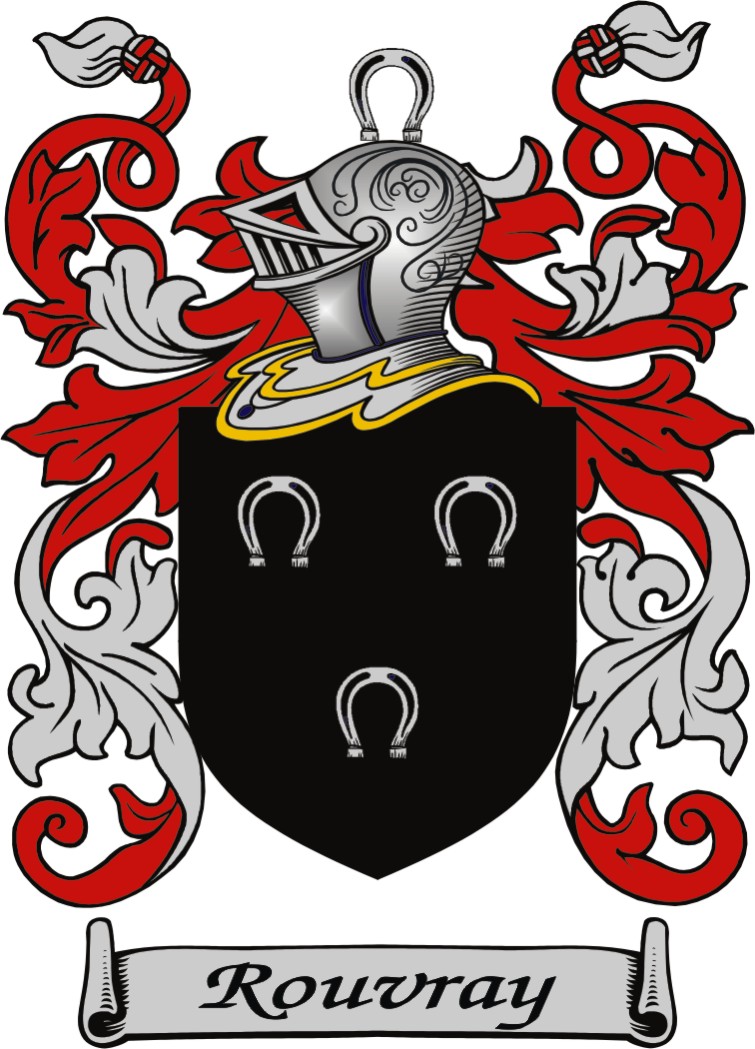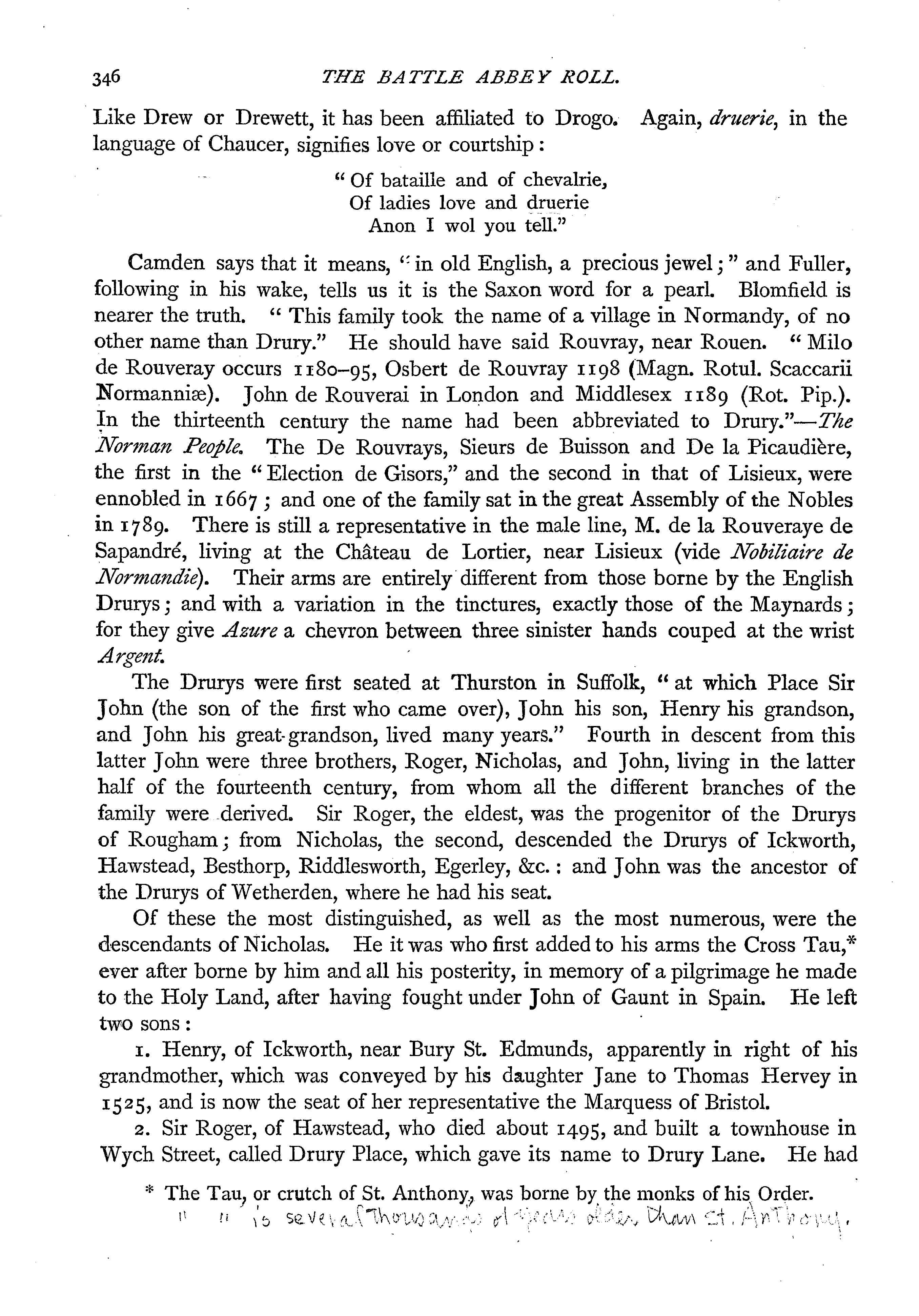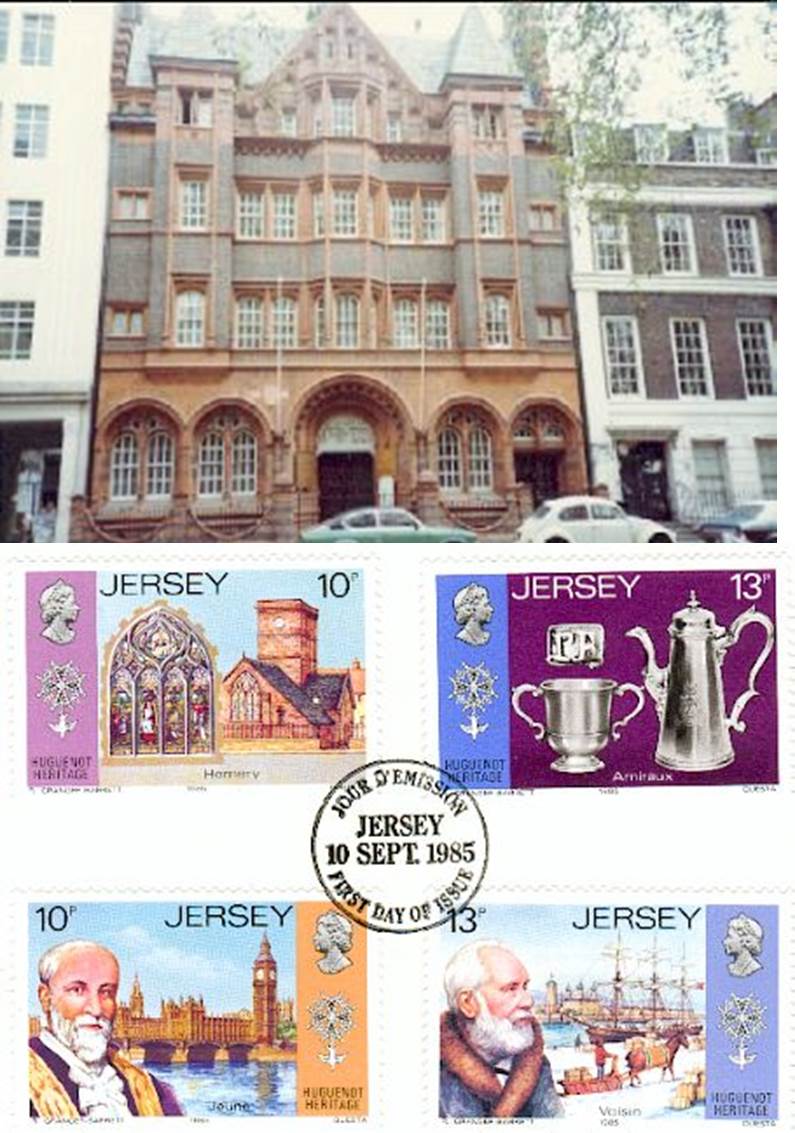

|
ROUVRAY SURNAME FAMILY WEBSITE
|
The Rouvray name has been found in England as early as the 12th century, namely John de Rouverai in 1189. This reference comes from a document called the Battle Abbey Roll which is, however, of dubious authenticity. Intriguing about this account, however, is that John de Rouverai is given as a resident of London and Middlesex, which is where the later 19th century established ancestors of the modern day Rouvrays were also born and resident.
John de Rouvrai [Drury] |
|---|
 |
A later reference is to John Peter du Roveray who appears living and working at 30 Great St Helens, Bishopsgate Street Within, London as a merchant in trade directories from 1765 till 1792. In 1792, John Peter was declared bankrupt and ‘The Times’ newspaper advertised the sale of his premises (“all that large and roomy freehold messuage, tenement or dwelling house with large cellars under same”) on Wednesday 29th January 1793 at the Guildhall, London.
John Peter’s naturalization dated 1771, names him as the son of Francis du Roveray and his wife Antoinette Durade and gives his birthplace as Geneva. His first marriage was to Jenny Scott on 7 November 1771 at St Helen Bishopsgate. After Jenny's death, John Peter later married Johanna / Jane Etienette Chapnis on 1 November 1797 at St John’s church in Hackney.
John Peter [Duroveray] was buried on 22 October 1810 at Shoreditch aged 68, suggesting a birth year of around 1742. Jane [Du Rouveray] was buried at St. Mary’s, St Marylebone on 30 January 1837 aged 71.
It appears that there were at least two children from John Peter’s marriage to Jenny Scott. One of these, Francis Isaac du Roveray, was admitted for the Freedom of the City of London on 18 June 1799 by redemption in the Company of Patternmakers. He is also listed as a witness at the marriage of Hermansina du Roveray, presumably his sister, when she married John Anthony Caton Nourrisson on 15 March, 1815 at St Olave Church, Hart Street. Francis Isaac died in 1849.
A reference has been found to a marriage on 12 September 1833 between Louis Pierre Joseph Rouvray and Rose Magdeliene Chevret at St Sulpice in Paris. These names could indicate that this may be a cousin of our James and Louis. He is stated to be a widower of Genievieve Aglae Frache, living in le Rue du Laver (“laver” = ‘to wash’) and his profession was ‘tapissier’ or tapestry maker. Louis Pierre Joseph and Genievieve Aglae Frache had at least three children – Victoire Josephine b. 16 Jul 1822, Charles Guillaume b. 24 Jan 1825 and Frederic Joseph b. 3 Jan 1826 and he had at least one with Rose – Flora Victorine b. 5 Apr 1838.
Huguenot church and stamps |
|---|

|
Initial research indicated that Rouvrays came to England from the 16th century onwards as Protestant Calvinists or Huguenots fleeing persecution from Catholic France. Huguenots had long been a feared and hated Protestant minority and in 1572 in Paris their homes were attacked and pillaged and many brutally murdered. An estimated 40,000 Huguenots were killed this way throughout France which resulted in about 50,000 of them fleeing to England, predominantly London. Their skills in weaving, gold- and silver-smithing, commerce, science and the arts made them well suited to the opportunities the capital had to offer.
To help trace Huguenot ancestry the Huguenot library was established in London in 1957. The earliest reference to the Rouvray surname in this library is of a Jacques de Jaucourt, Lord de Rouvray who was elected Lord Deputy-General of the Protestant churches at Saumur in 1611. Lord is a translation of Seigneur, which was a territorial title (i.e., Lord of the Manor) and not inherited. However many refugees retained their territorial titles as family names in the hope they may one day be able to return home.
A definitve proven link or connection to Huguenot heritage has, however, so far NOT been established.
What has been established is a definitive ascendant from about 1770 to the modern day Rouvrays, both in England and Australia. His name is Joseph Rouveray and a comprehensive family tree of his descendants now exists. Refer to the Rouvray Family Tree for further details. Two of his sons, James born 1812 and Louis, born about 1818 are the direct ascendants of respectively the Australian and English Rouvray family branches.
Whilst the surname Rouvray is very rare and therefore easy to trace it is also often misspelt which makes tracing considerably more difficult or neigh impossible.
The following spellings have all been found in records: Bowray, Louvray, Perray, Rauvery, Roavray, Rodvray, Roewery, Roffway, Ronoray, Ronray, Ronvray, Ronway, Ronwray, Roubray, Roueray, Rouoray, Rouovray, Rourdy, Rourray, Rousay, Rousray, Rouv*y, Rouvrais, Rouvary, Rouvraye, Rouveay, Rouverai, Rouveray, Rouverey, Rouveroy, Rouvery, Rouvnoy, Rouvpay, Rouvrary, Rouvray, Rouvre, Rouvsay, Rouvsra, Rouvsray, Rouxray, Roveray, Rovoray, Rovray, Rowbray, Rownsay, Rowray, Rowvray, Ruvery and possibly Rofroy.
These may be attributable to transcription errors (due to difficulties in reading old script) or misunderstanding of the ‘correct’ spelling. This proves to be frustrating as there are many occasions on which it is known that the correct record should be ‘there’, but because the name has been mistranscribed or misspelled, it is almost impossible to find.
A good example of this is Louis Rouvray (the ascendant of all English Rouvrays) who was born about 1818 but for whom no death could ever be found. It took 18 years of searching to eventually discover and verify his death certificate details which had been erroneously registered under the name of Ronvray.
Where names are given in square brackets ([]) the spellings are those found in the associated historcal records or documents.